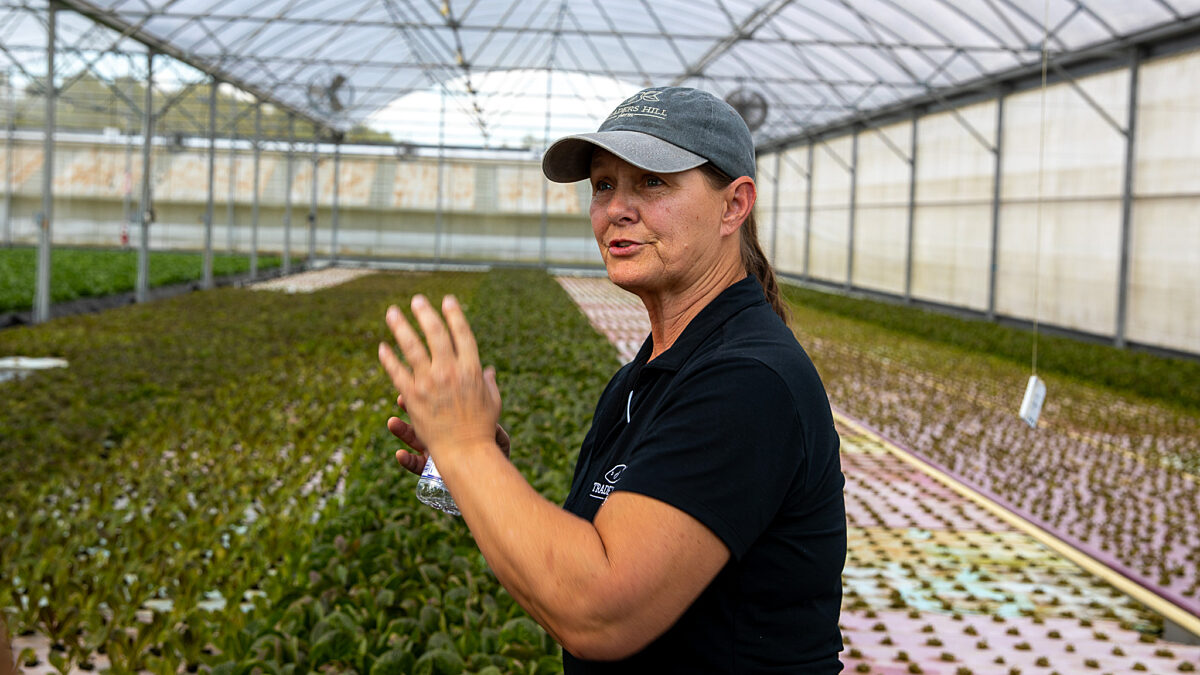Bridging the Farmer-Consumer Gap
Guest Author
Special Contributor to FB.org

photo credit: AFBF Photo, Morgan Walker
Guest Author
Special Contributor to FB.org
By Shiloh Perry
Consumers are increasingly curious about their food. We want to know what’s in our food and how it is produced. We are interested in the latest food and dietary trends.
Current consumer behavior presents an opportunity for those involved in agriculture, and we need to act on it. For example, people may have emotional reasons for eating certain foods. Dietary trends are not going away. They just change. False information about agriculture also gets thrown in the mix and complicates things even further.
It is time for those of us with a connection to agriculture to refine our efforts to bridge this information gap.
The average American is at least three generations removed from the farm. As more and more people move away from farm and ranch work, the gap between farmers and consumers expands and the need for a general understanding of agriculture becomes even more pressing.
It is time for those of us with a connection to agriculture to refine our efforts to bridge this information gap. If you are like me, you know this effort is extremely important but are unsure where to begin. You are also passionate about agriculture and care about how it is perceived by the public, but feel that sharing the story of America’s farmers and ranchers can sometimes be daunting.
Reconnecting consumers with the origins of their food is no small task. It is a huge undertaking that takes time and involves many different methods, steps and complexities. In my career, I have learned that to explain farmers’ priorities, the techniques of modern agriculture or why farmers do what they do, it’s most effective to start small. Below are three ways to do just that.
Invest in others. This seems like common sense, but it makes all the difference, especially when everyone is always on the go and thinking about completing the next item on a never-ending to-do list. It is important for us to take the time for and actively participate in conversations about food and agriculture with other consumers. Think of these discussions as talks you would have with a good friend. Have them often, be personable and show interest in what others prioritize and they are likely to do the same.
Be open to opposing and new viewpoints. Being too quick to judge is never helpful. We need to take off our judgmental hats and listen in order to understand others’ perspectives. Try to find out as much as you can about the person and the reasoning behind his or her stated beliefs about agriculture. You never know – you may learn something and it is always helpful to better understand how different facets of agriculture are perceived.
Always be ready to share. Conversations about agriculture and food can happen anywhere. For me, the richest opportunities for agriculture advocacy always happen at the most surprising times, which means it’s important to be prepared. Keep a couple of personal examples backed by facts and specific statistics in your back pocket. This will help you capitalize on opportunities by appealing to others through both science and emotion.
Simple conversations are an effective way to share agriculture’s story. Investing a small amount of time, striving for productive interactions and providing solid examples can go a long way.
Shiloh Perry is media relations specialist at the American Farm Bureau Federation.